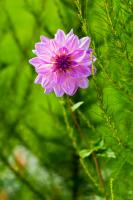Can I Plant My Elephant Ears in Water?
One of the benefits of elephant ear plants is that they can tolerate different growing conditions. One question that often arises is whether they can be planted in water. The short answer is yes, elephant ears can be grown in water, but there are a few things to keep in mind.
Choosing the Right Variety
Not all elephant ear varieties are suitable for growing in water. The best varieties to choose are those with compact root systems that can handle being fully submerged. Some of the best options include the Colocasia esculenta ‘Black Magic’ and Colocasia esculenta ‘Diamond Head.’ Be sure to choose healthy plants with strong roots.
Preparing the Container
When growing elephant ears in water, you need to provide them with a container that is deep enough to allow them to fully submerge. Choose a container that is at least six inches deep and fill it with clean water. You can also add aquarium gravel to the bottom of the container to help anchor the roots and keep the plant stable.
Caring for Your Elephant Ear Plant
Once you have planted your elephant ear plant in water, it’s important to follow a few simple care guidelines to ensure that it thrives. Here’s what you need to know:
Place your container in a sunny location: Elephant ears need plenty of bright, indirect sunlight to grow well.
Keep the water level consistent: Check the water level regularly and add more water as needed to keep the roots submerged.
Fertilize your plant: Add a slow-release fertilizer to the water every few weeks to provide your plant with nutrients.
Watch for pests and diseases: Elephant ears can be prone to spider mites and other pests, so keep an eye out for any signs of damage.
Prune as needed: Remove any dead, damaged, or yellowing leaves to keep your plant healthy.
Transplanting Your Elephant Ear Plant
If you decide to transplant your elephant ear plant out of water, it’s important to do so carefully to avoid damaging the roots. Wait until the plant is well-established before attempting to transplant it. Choose a location with moist, well-draining soil and plenty of indirect sunlight.
When transplanting, gently remove the plant from the container and shake off any excess water. Tuck the roots into the soil and cover them with a layer of compost or organic mulch. Water the plant thoroughly and keep the soil consistently moist to help the plant establish itself in its new location.
In Conclusion
Planting elephant ears in water can be a fun and interesting way to enjoy these unique and beautiful plants. With a little care and attention, you can grow an impressive display of elephant ears in a container or water garden. Just be sure to choose the right variety, use a deep container, and provide your plant with plenty of sunlight, water, and nutrients.

 how many times do yo...
how many times do yo... how many planted tre...
how many planted tre... how many pine trees ...
how many pine trees ... how many pecan trees...
how many pecan trees... how many plants comp...
how many plants comp... how many plants can ...
how many plants can ... how many plants and ...
how many plants and ... how many pepper plan...
how many pepper plan...




























